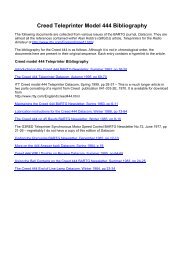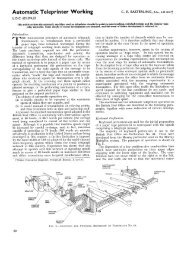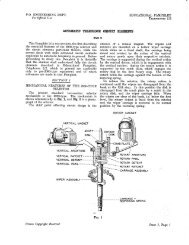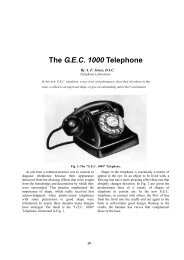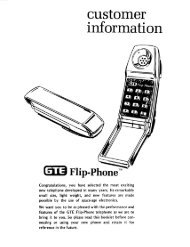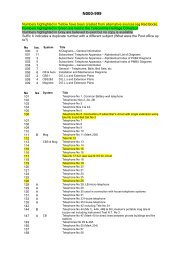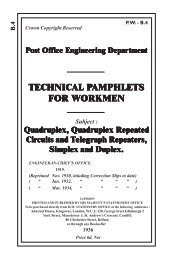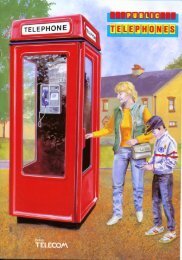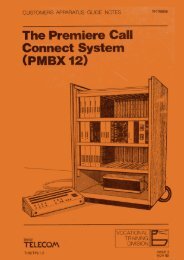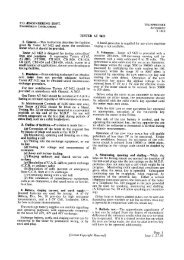TRAFFIC CONTROL TELEPHONE SYSTEMS Circuit - Sam Hallas
TRAFFIC CONTROL TELEPHONE SYSTEMS Circuit - Sam Hallas
TRAFFIC CONTROL TELEPHONE SYSTEMS Circuit - Sam Hallas
Create successful ePaper yourself
Turn your PDF publications into a flip-book with our unique Google optimized e-Paper software.
10. Impulse Ratio Check on Selective Signalling. (See Fig. 23.)<br />
It is important that the impulses due to line battery reversals sent out<br />
to line on selective ringing circuits should be of equal duration. This can be<br />
checked as follows:<br />
Insert test plugs into line under test. Operate Line Cut Off Key (LCO)<br />
(to avoid calling all stations). Operate Impulse Ratio Key (IRK) and transmit<br />
a "General Call."<br />
Selector <strong>Circuit</strong> Impulse Ratio Test.<br />
Fig. 23.<br />
The voltmeter needle should move a short equal distance on either side<br />
of the zero marking, and at the end of the code give a full swing to the right.<br />
This will only apply if the impulse ratio is correct, that is 50% operated,<br />
50% unoperated. If, however, the pointer vibrates on either side of, say,<br />
the 10 volt marking to the right on the 70 volt scale, then the ratio would be<br />
incorrect at approximately 60% operated and 40% unoperated. The function<br />
of the Relay IRR is to ensure that the voltmeter is not connected<br />
across the lines when the line battery is applied to line before impulses are<br />
sent out. If this were not done the voltmeter needle would receive an initial<br />
deflection and might not settle down to the correct indication before the<br />
end of the General Call code.<br />
Page 61



